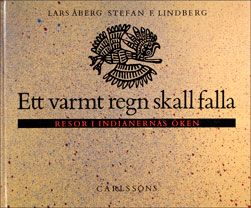“The special form, where documentary is mixed with semi-documentary, adds a depth to the story that straight reporting could not achieve… “A Warm Rain´s A-Gonna Fall” is not the sort of book that will make you happy, but it is an absolutely brilliant account of the still ongoing Indian wars.”
(Author Ellen Mattsson in the daily Bohuslänningen)
“…a prose which is poetically empathetic, but also politically perspicacious… In his fictional chapters Lars Åberg creates an atmosphere and a language close to those of the short story. Where other Europeans often stand on the outside and look into the “picturesque” Indian culture, Lars Åberg is living at its centre, trying to recreate moods and humans with respect and insight. He really succeeds… The texts are steaming with atmosphere, drawing the reader into the Indian reality.”
(Patrik Sélsfors in the daily Folkbladet)
“…eminent, well-written and informative reporting of a kind that we have not been spoiled with in Sweden… The strength of the book lies in its unobtrusive depiction of everyday life…deromanticized and free from illusions, yet not disillusioned, it portrays an, against all odds, still vigorous culture.”
(Author Oscar Hemer in the Malmö daily Sydsvenskan)
“The book is written with passion and infectious commitment… Lars Åberg shows his strength in his always personal style of reporting.”
(Monica Tunbäck-Hanson in the daily Göteborgs-Posten)
“Reading this book of reporting is like reading a script for a contemporary Western movie… No other Swedish journalist knows the history of Native Americans better than he does, and the texts offer a fascinating journey into “the center of the universe”, the Hopi term for their land.”
(Thore Soneson in the photography magazine Fotografisk Tidskrift)
“The book is an extraordinary gateway to the modern Indian situation… The language is subjective and poetically charged.”
(Claes Nordenskiöld in the Stockholm daily Svenska Dagbladet)
“…a both beautiful and terrifying tale of people, myths, and environmental struggles on Indian land.”
(Anette Nyqvist in the travel magazine Res)

